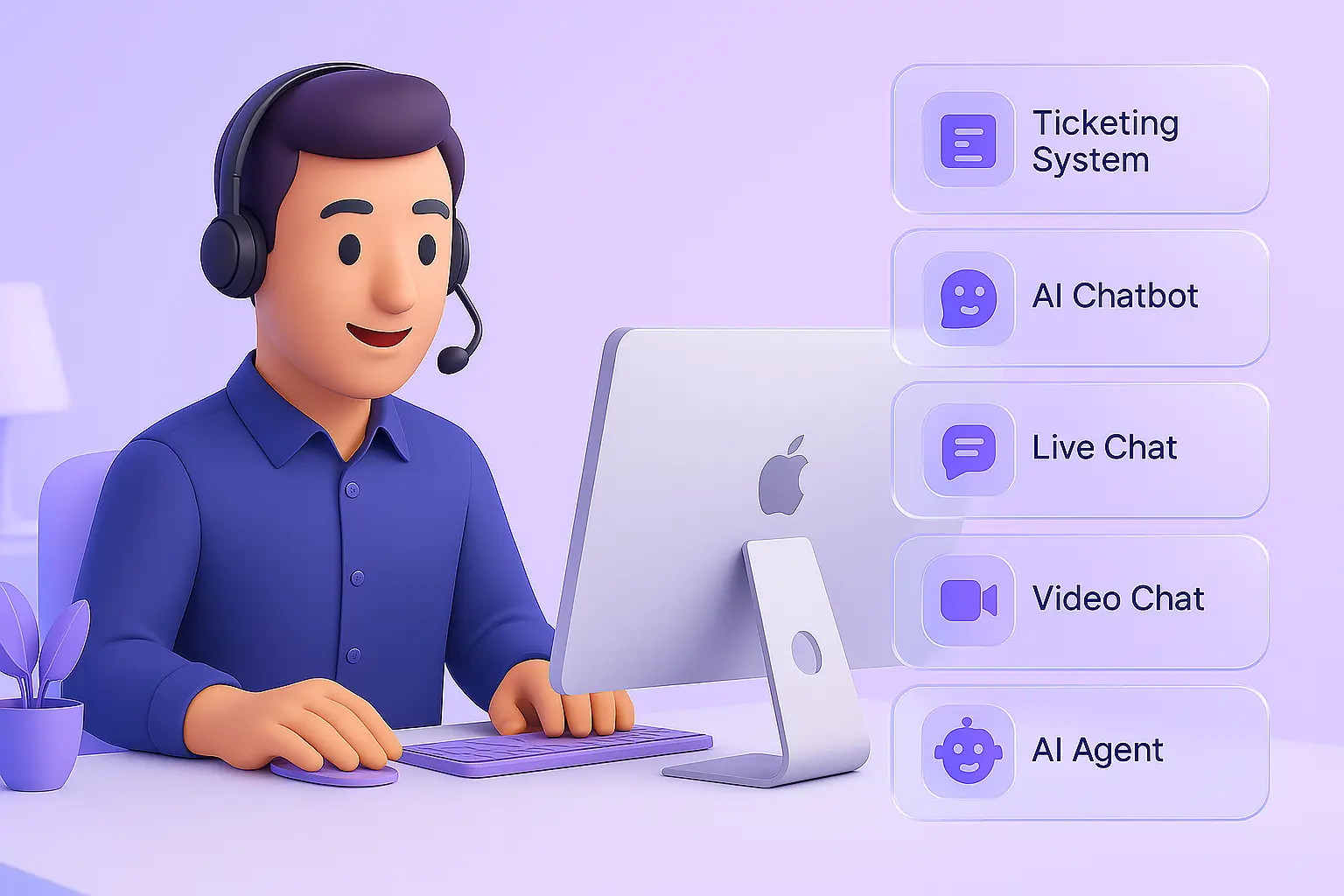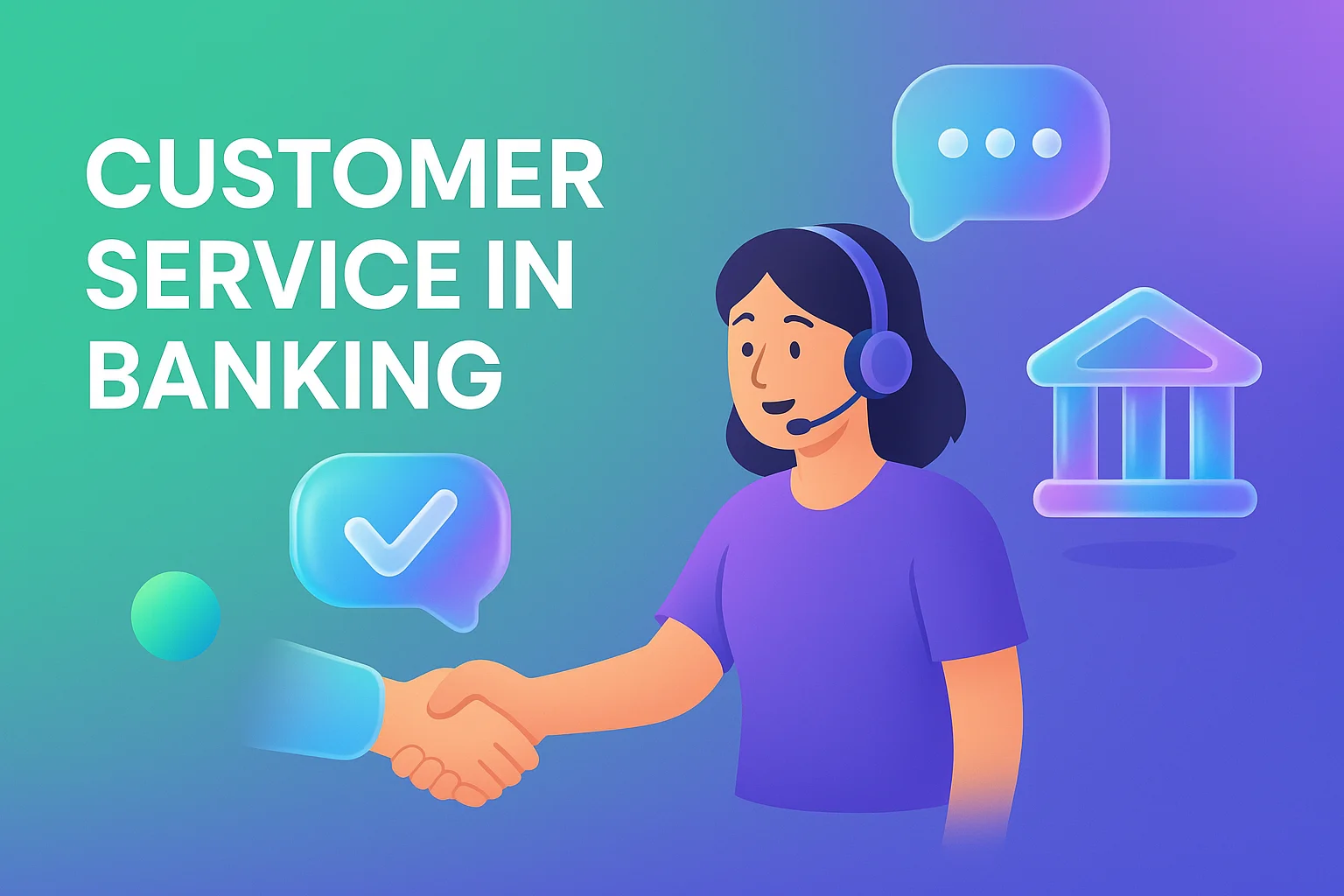How to Improve Customer Service Etiquette: 12 Best Strategies (2025)
- April 5, 2016
- 17 mins read
- Listen
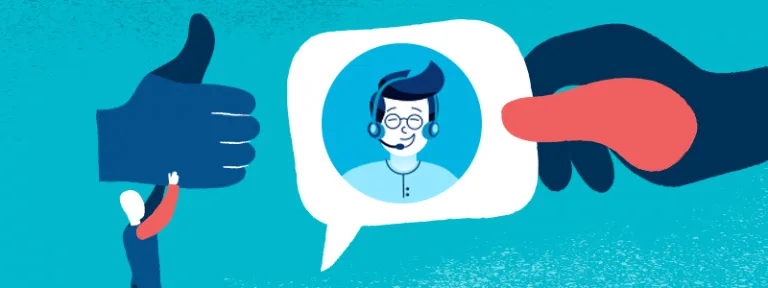
Customers demand ‘QUICK ASSISTANCE’. Poor customer support still remains a significant concern for many of the businesses. Customers get disappointed when they need to wait in a long queue to get help, get cold treatment from support agents and most importantly see lack of professionalism.
These challenges often lead to negative reviews, customer churn, and missed opportunities for brands.
But there’s a solution—adopting proper customer service etiquette. By focusing on empathy, clear communication, active listening, and quick assistance, businesses can create a positive and lasting impression on their customers.
The basic principles of service etiquette should be integrated into every facet of your business to deliver top quality service.
In this blog, we’ll learn more about customer service etiquette and provide practical tips to help you turn challenging situations into opportunities to build connection and trust.
What is Customer Service Etiquette?
In customer support, etiquette refers to an effective interpersonal communication with customers, combining strong verbal and nonverbal skills to convey ideas and emotions clearly.
By following the proper support customer etiquette tips, the agents can establish a professional tone with the customer that is favorable to the company as well as the customer.
Training your employees by conveying the main principles of customer service etiquette should be the strategy whether you offer omnichannel or multi channel customer experience. You can teach them the tips and best practices on how to communicate with customers to build a strong rapport and enhance brand image.
Importance of Customer Service Etiquette
Customer care etiquette is all about maintaining professionalism while interacting with customers and resolving their concerns effectively. It includes guiding customers throughout the buying decision, addressing their pain points and resolving issues with empathy.
This is essential because it significantly influences the quality of engagement between businesses and their customers. Here’s why it is important:
Builds Trust and Loyalty
Customer service etiquette helps to build trust and loyalty. When you make your customers feel important and respected, they will return to you for more business. Polite communication and a genuine willingness to help assure customers that their needs are your top priority.
Over time, they will become loyal to your brand. Chances are high that you may turn one-time buyers into long-term advocates for your company.
Helps to Increase Conversions
Conversion rates measure the percentage of potential customers who take the desired action, such as completing a purchase or signup. When customer support reps engage with customers personally, understand their requirements and clearly explain how the company’s product offerings can address those needs, it increases the likelihood of a successful conversion.
Boosts Team Morale
Customer service manners doesn’t just benefit customers; it also positively impacts the support team. When the team consistently practices respectful communication, it creates a professional and supportive workplace culture. This, in turn, motivates them to give their best and collaborate effectively.
Helps to Manage Complex Situations
Not all customer interactions go smoothly. In case critical situations arise, good etiquette is your most effective tool to manage and resolve issues. Being empathetic, staying calm, listening actively, and responding politely can de-escalate situations and reassure customers that their concerns are being taken seriously.
12 Best Tips to Improve Customer Service Etiquette
It is crucial to understand the importance of customer service etiquette for interacting with customers. In order to gain that understanding, you need to train & educate your employees on how to communicate with customers to deliver excellent customer service experience.
Here are the key customer service manners and rules that will help you to deliver excellent customer support.
- Be transparent about your products and services
- Offer proactive sales & support assistance
- Ask the customer for feedback after a resolution
- Use the right vocabulary
- Personalize your conversation
- Listen to your customers
- Offer gratitude to your customers
- Maintain a professional attitude
- Drill customer service etiquettes in your team
- Use interpersonal skills
- Keep your customers updated
- Be confident
Let us discuss the principles of customer service etiquette that can help your customer service associates to understand customers and handle them efficiently.
1. Be Transparent about Your Products and Services
“Transparency is the new normal.” – Forbes
Customers look for transparent information about brands. Businesses while implementing the transparency practices must understand from customers’ perspective to what they want to know and hear.
One way to come up with that list is to look at the most common customer problem areas.
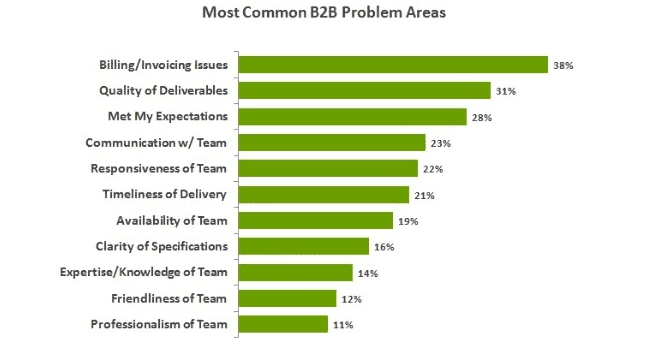
Based above areas here are some customer service etiquette tips to be followed:
- Be Truthful and Accurate – Impart authentic information related to products and services to avoid future confusion among customers.
- Keep Your Promises – Don’t make fake commitments and set customer expectations that will break their trust and loyalty.
- Share the Knowledge – Know your brand offers and discounts prior to offering to customers to maintain brand efficiency.
2. Offer Proactive Sales and Support Assistance
Being proactive means understanding customers’ issues and offering support before the customer reaches out to your support team. InContact study drew an inference that customers are satisfied and positive with proactive customer service.
Live chat is the best channel to offer proactive support to customers. With live chat customer service, you can connect with customers in real time when they are facing any issue or are stuck on any specific page.
You can also engage customers by using visual engagement tools like video chat & co-browsing solutions to make conversation interactive and effective. You can collaborate with the customer’s browser to identify issues faster and offer effective solutions. You improve customer satisfaction by reducing the number of touchpoints.
Customers prefer multiple channels like websites, social media, Facebook messenger, etc. to connect with you. You should offer omni channel support to engage them across their preferred channels and deliver consistent customer service. Live chat helps to gain valuable insights on the customer journey and trigger the right message at the right time to deliver the best omnichannel customer service.
Proactive customer service etiquette manners accelerate customer satisfaction as well as business productivity by:
- Improving Customer Loyalty – GDS report says, the businesses that follow proactive customer service etiquette noticed growth in the customer retention rates by 3-5%.
- Reducing Customer Support Tickets – Identifying the issues and assisting customers with customer engaging tools before they become complex problems reduces the number of request tickets.
- Multi-Channel Conversational Engagement – Customers share their good and bad experiences with brands over social media. You can proactively handle such conversations to improve your brand image.
REVE Chat is an AI powered omnichannel customer service platform that helps you to offer instant assistance on your website, mobile app and other social media platforms like Facebook, Instagram, Telegram, Viber and WhatsApp.
It offers a suite of tools that can help your business offer proactive support to customers. Sign up for the 14-day FREE TRIAL to try out all its unique features.
3. Ask for Customer Feedback After a Resolution
Customer feedback is a vital ingredient for the success of any business. Through feedback, you can improve the effectiveness of your products and services. The best time to ask customers for feedback is after the successful resolution of the problem.
By analyzing customer feedback, you can measure customer satisfaction levels to improve customer service etiquette to deliver a better experience that further improves retention.

The key reasons why customer feedback is important for your business.
- Feedback from customers helps you to know what customers feel about the brand.
- Identify the gaps between the customers and the business and end up with a product that is sheer perfection.
- You can instill the feedback into customer service etiquette training to improve communication.
- It opens up a conversation with customers and develops a long-lasting relationship.
- Customers feel appreciated for their opinion regarding the product.
4. Use the Right Vocabulary
It is very important to choose the right words before you speak to your customers. The customers can get a bad impression with certain words or phrases used by the customer support agents.
Customers generally switch brands because they are put off by untrained or rude support professionals. McKinsey reports say, “70% of the customer’s journey is dictated by how the customer feels they are being treated”.
The video explains the magical customer service phrases to be used during real time conversations.
Support representations with proper customer service etiquette can make customers fall in love with your brand. Here are some of the examples to look into for customer service etiquette.
Phrases to be used during conversations are:
- How can I help?
- I’m sorry
- I can understand why you’d feel that way. Let’s see what can be done now
- You’re welcome
And phrases to be avoided are:
- Sorry about that
- I don’t know
- Unfortunately, no
- No problem
5. Personalize Your Conversation
Personalization adds a spark to the boring customer service. Irrespective of your business sector and size, connect with customers at a personal level and deliver personalized customer experience.
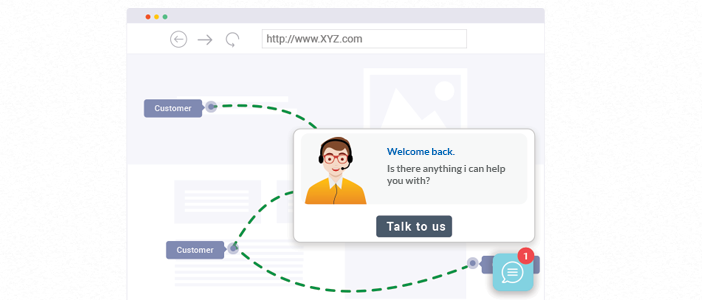
By using an AI chatbot, you can engage your customers 24×7 and for complex queries, you can direct them to the right support channel immediately. 79% of buyers only consider brands that understand and care about them.
Here are customer service etiquette rules to follow:
- Make the conversations one-on-one basis, that will give a special feeling to the customer.
- Use the first name to address the customers while talking to them.
- Identify the nature of the problem and understand customer needs.
- Send personalized greetings to set a personal tone to your conversation.
Never waste time on general questions – jumping directly to the right solution for the customer makes the process personal as well as efficient.
6. Listen to Your Customers
Active listening to customers is one of the key pillars of customer service communication guidelines and every business should adhere to that. Never fail to make your customers feel comfortable, valued, and appreciated. Be knowledgeable of and understand the relevant policy and procedures.
Always listen to what they say. A significant number of customer complaints are just about the fact that no one “listens” to them. It is a big relief for a customer to know that someone is listening to them and trying their best to resolve issues for them.
Without listening to your customers, you will never know the problem or the complexity of the issue. And unless there is a customer service checklist sample, your support team may not know how to listen to customers well.
Follow the below customer service etiquette manners:
- Listening actively is one of the best ways to serve your customers with the virtues of conversational customer service. You should not interrupt them in between. It helps you to identify the problems and provide relevant solutions.
- Attentively listening to customers helps to figure out what exactly your customers want, their opinions, feedback, etc. All the customer information collected can be passed to the teams across respective business platforms to implement it.
7. Offer Gratitude to Your Customers
An important principle of customer service etiquette is to demonstrate good manners. Your support team should be well trained to offer gratitude at the end of the conversion. One way to create a positive experience for customers is always to say “thank you.” Kindness and gratitude to customers are a sure way to further engage them for long term.

Believe it or not, a sincere thank you goes a long way. Establish a company culture of high-quality customer service and commit to delivering superior service whether over the phone or face-to-face.
8. Maintain a Professional Attitude
Being professional is a very important customer service etiquette that needs to maintain in all scenarios. This skill is important for any business that has to balance customer service vs customer support.
Tips to follow:
- Refer to customers as ‘Mr. XXX or Sir’ and ‘Mam’.
- You are supposed to ask customers – if it is OK to put the customer on hold and apologize if the customer was on hold for more than 60 seconds.
- Avoid using slang words or obscenities.
- Do not refer to the customer by their first name if it is not insisted on by them.
Following the above examples helps to set a professional tone throughout your conversation. It impresses the customers and is always appreciated.
9. Drill Customer Service Etiquette in Your Team
Training should be restricted only to top-level employees. You can make customer support etiquette a core part of your team training. And it should be consistent across all the departments and teams.
Few customer service etiquette training tips to follow:
- Have Regular Team Calls – You can share all the important information across the whole team so that they understand the customer issues.
- Conduct Product Service Training – You can educate your team with all the existing and new features and problem-solving techniques for dealing with customers. If needed, you also arrange interpersonal and team building activities
10. Use Interpersonal Skills
Lend your ears as well as undivided attention to your customers. It never goes waste.
Your voice should be such that your customers feel happy after talking to you. If you sound dour it will leave a bad impression as words and inflection over a phone are much more important than in a face-to-face encounter.
Here are some basic customer service etiquettes for different channels:
Phone Etiquette for Customer Service:
- Always have a purpose for your call.
- State your name and reason for the call. Ask the customer if it’s a convenient time to talk.
- Keep conversations brief and to the point.
- Speak slowly and politely.
Email Etiquette for Customer Service:
- Don’t use email in place of a phone call or personal meeting.
- Frequently save your email as you are writing so that you don’t end up losing any work.
- Reference attachments in the body of the message.
- Select a subject line that is targeted and relevant to your overall message.
Call Center Etiquette for Customer Service:
- Always introduce yourself and the company
- Ask the caller if it is okay to place them on hold and wait for them to say it’s okay
- Inform the caller as to why they are being transferred
- Mention why it is in their best interest to be transferred
Live Chat Etiquette for Customer Service:
- Always set a positive tone by using the right scripts and phrases.
- Make the right use of canned responses to deliver faster replies to customers.
- Keep your commitments to your customers.
- Show empathy when required.
You may also like to read more on how to use live chat etiquette tips for customer service success.
11. Keep Your Customers Updated
Your customer service etiquette should not miss out the golden rule of keeping your customers updated about your new products, plans, policies, etc. It is very important to train your team to update customers because they have to provide a time frame to your customers.
Why? Because when you resolve their issues within the time frame you gain a loyal customer at that point.
For example – If a customer has ordered something and not received on the date of delivery, he will be calling you to know the exact reason. You can be able to give a genuine reason, apologizing for the delay and inconvenience also assuring a date of delivery.
12. Be Confident
Sometimes well-trained people also get fumbled, while dealing with a tricky request specially or when there is a new product launch. One of the key customer support etiquette techniques is to remain positive, calm, and poised while answering to customers.
Being confident not only creates a positive image for your brand but also builds trust and customers start believing in your brand.
How you can be confident?
- Politely ask your customers to please wait so you can deliver exactly what they’re asking.
- If you don’t know the answer, don’t apologize profusely or say that there’s nothing else you can do. Transfer to another associate or the manager in order to provide them the best possible experience. You should not feel that you are not able to provide quality service when referring the customer to a more experienced member of the team.
Customer Service Etiquette: Things to Avoid
Offering great customer service is not just only solving problems or responding to customer queries. It’s also about creating a positive, memorable experience for customers. To make it correct, we have already discussed the best tips and strategies. Here we will understand some of the behaviors and habits that can harm customer relationships. So, here’s a list of common pitfalls in customer service etiquette and how to avoid them in detail.
1. Ignoring the Customer’s Point of View
Customers want to feel heard and understood, especially when they are explaining their issues to the support team. Ignoring their perspective—or worse, dismissing their concerns—can make them feel bad and disrespected.
What to Avoid:
- Responding with indifference, such as “That’s not a big deal.”
- Using dismissive phrases like, “That’s not our policy,” without explanation.
2. Replying from Scripts
Avoid depending too much on prewritten scripts while interacting with your customers as this may sound robotic. Rather try to offer personalized assistance to each one of them.
What to Avoid:
- Reciting scripted apologies word-for-word.
- Responding with very generic phrases that don’t address the customer’s specific issue.
3. Interrupting the Customer While Talking
When a customer is explaining his issues with you, please don’t interrupt and start sharing your own points. Such practice signals impatience and a lack of respect. Chances are high that the customer gets more pissed off and escalates the issue.
What to Avoid:
- Don’t cut off the customer mid-sentence to offer your solution
- Finishing their sentences by yourself to speed up the conversation
- Assuming you understand their issues without letting them explain fully
4. Using Negative or Harsh Language
Language plays a significant role in customer service. No matter how frustrated the customer is, while talking to him, you need to be calm and polite. Negative or confrontational wording can make customers feel attacked, even unintentionally.
You Need to Avoid Using Words Like:
- ” What I’m saying is not clear to you.”
- “You must have misunderstood.”
- “You didn’t follow the instructions correctly.”
- “That’s not what I said.”
5. Failing to Apologize When Necessary
Mistakes happen, because we all are humans. but you have to admit and apologize. When you don’t, customers feel ignored. Failing to acknowledge your faults can make customers feel that their grievances are being ignored or dismissed. Also apologize even if the mistake is not at your end.
Avoid Using Words Like:
- Excuses like, “It’s not my fault.”
- Conditional apologies such as, “I’m sorry if you feel this way.”
Final Thoughts!
Every business should focus on giving importance to their customers. You need to understand what exactly they are going through, looking for and match their expectations keeping the right processes in place. Customer service etiquette training will ensure that your customers receive superior service with each interaction.
The foremost priority of your business should always be on delivering great and prompt support to customers. Sign up with REVE Chat to get the advanced live chat engagement tools and bolster your support like never before.
Frequently Asked Questions
Politeness, empathy, active listening, professionalism and clarity are some of the basics of customer service etiquette.
A calm, friendly, and empathetic tone helps to build rapport with the customers. Even in written communication such as emails, choosing a positive and non-confrontational language helps to maintain a professional tone.
Be honest. Admit that you don’t know the answer of that specific query but assure the customer that you’ll find the answer. For example: “I’m not sure, but I’ll check with my team and get back to you shortly.”
Actually, it depends. Sometimes you can be humorous but ensure that it’s appropriate to the situation. Avoid jokes during serious discussions or complaints.
Receiving negative reviews on social media can be disheartening, but it’s essential to address them with professionalism. The best approach is to acknowledge the concern publicly and then move the conversation to a private channel such as live chat, phone or email to offer a resolution.


